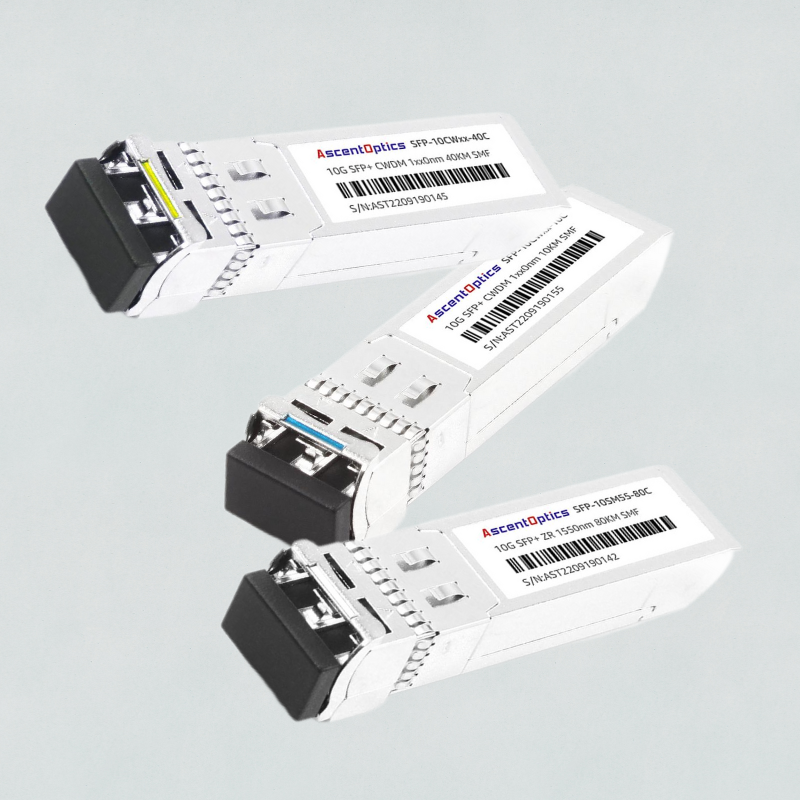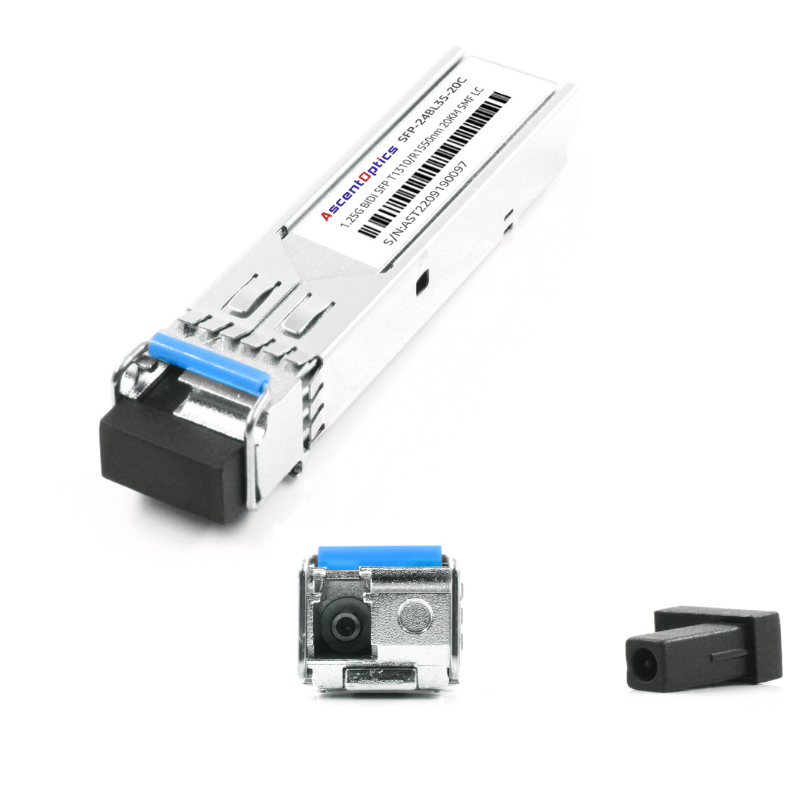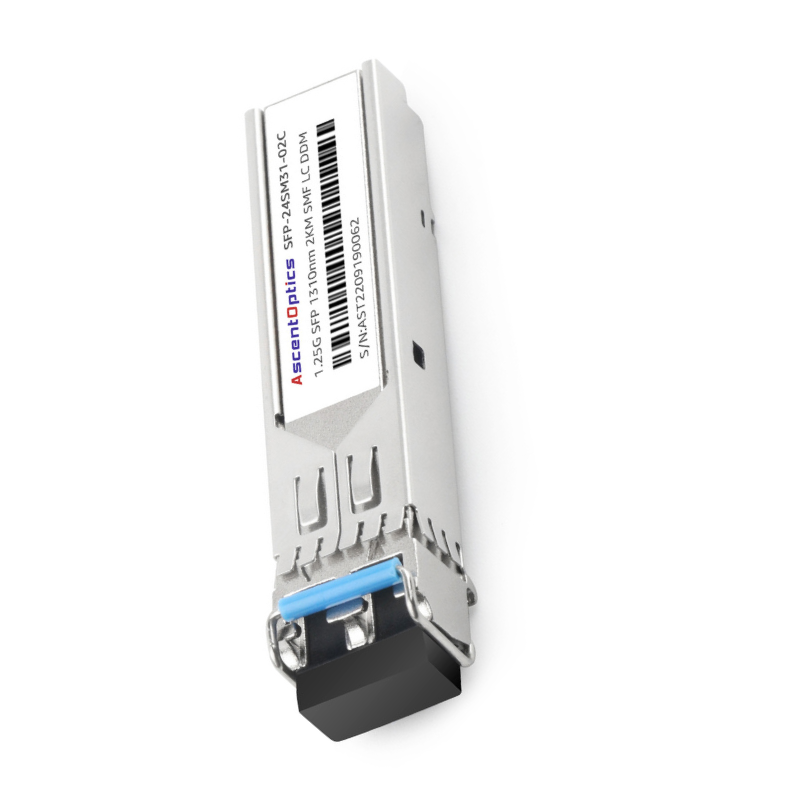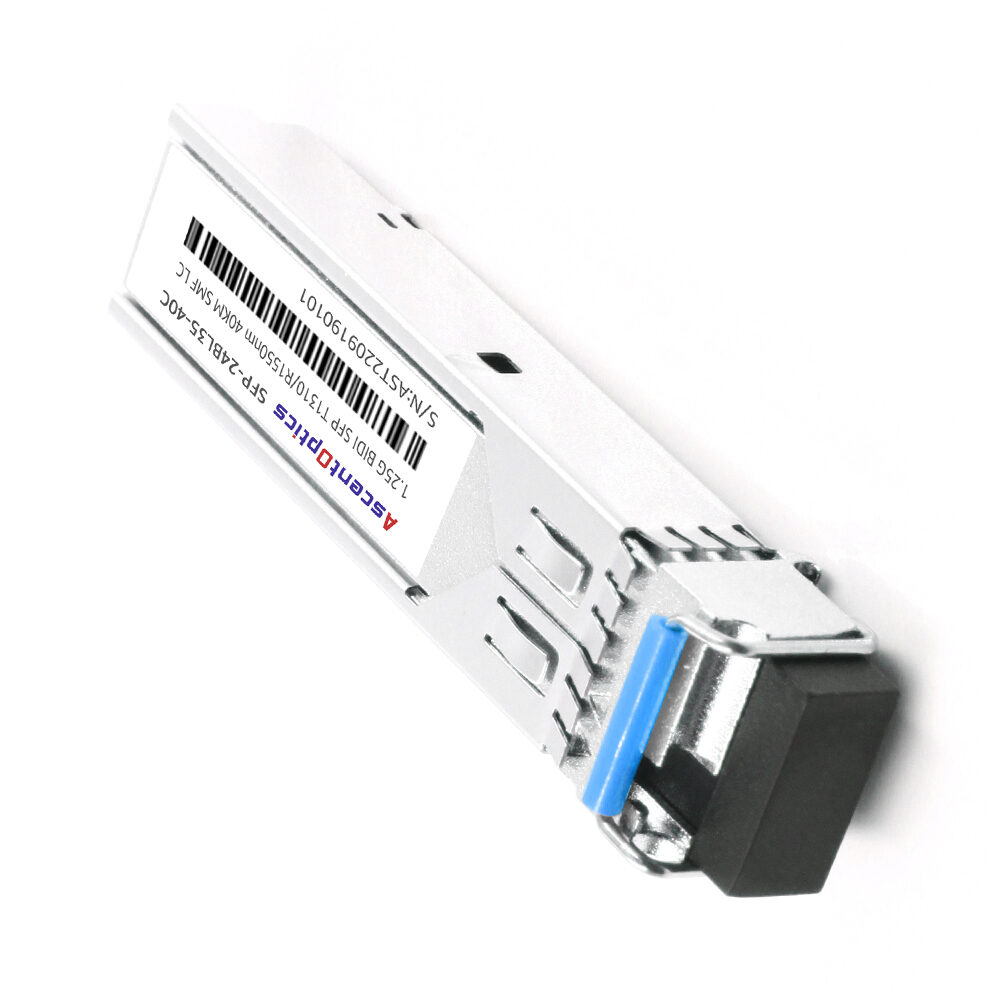In the ever-changing world of digital technology, organizations need to consider the strength and efficiency of their network infrastructure. Smooth data transmission across different networks is only made possible by Small Form-factor Pluggable (SFP) transceiver modules. This manual provides in-depth knowledge about Fortinet SFP transceivers, which includes their features, benefits, and usage. If you work in IT and want to improve your network’s performance or if you are a decision-maker who wants the best solution for your business, then this guide is for you because it will help you understand when and where to use Fortinet SFP transceivers in your network environment.

The Small Form-factor Pluggable (SFP) transceiver is a compact and hot-swappable I/O device deployed in networking hardware to enable network communication. Different types of SFP transceivers are designed to support high-speed data transmission over different distances, from a few meters to several kilometers. These modules can be inserted into network switches, routers, or other networking equipment with SFP ports, thereby allowing for a flexible and scalable network design.
Basically, an SFP transceiver functions by converting electrical signals into optical signals or vice versa, depending on the type of SFP module being used. The optical version uses light-emitting diodes (LEDs) or lasers to send data as light pulses through optical fibers, while for copper-based SFPs, the module handles electrical signal transmission over copper cables. They support various data rates, usually ranging from 100 Mbps up to several Gbps, and are widely applied in Ethernet and Fibre Channel networks, among others.
SFP transceivers offer modularity in network connectivity which allows for easy upgrades and maintenance thus improving flexibility, performance and life span of network infrastructures as well.
It is necessary to ensure that Fortinet SFP compatibility is achieved so as to ensure the best network performance and reliability. For smooth integration, it is important to use Fortinet-verified SFP transceivers that have undergone thorough tests for quality assurance and compatibility with Fortinets’ devices. These approved modules ensure high-speed data transfer, low latency as well as decreased rates of errors which are all necessary to keep network integrity alive. In their product documentation, Fortinet lists down comprehensively all compatible SFP modules, hence allowing network administrators to select appropriate types of transceivers for their specific network needs. An additional step can also be taken by making use of the auto-detection feature provided by Fortinet so that correct identification and configuration take place with regards to SFP modules during deployment, thus making this process simpler while at the same time improving the overall efficiency of networks.
Multimode Fiber (MMF) optical transceiver modules enable high-speed data transmission across short-to-medium distances within Fortinet networks, typically up to 550 meters. Businesses prefer using MMF modules mainly because they are cheap and can work well with existing multimode fiber infrastructure, which, in most cases, is found at data centers or enterprises. These operate at a wavelength range of 850 nm, supporting data rates from 1 Gigabit per second (Gbps) up to 100 Gbps, depending on the type of module being used. Therefore, employing MMF optical transceivers guarantees reliable connectivity efficiency throughout various parts of a network which is vital for ensuring its performance remains strong even when there are more users or devices added onto it. Network scalability can only be achieved if robustness continues being maintained, but this may not happen unless proper connection methods are followed, thus risking issues arising out of non-compliance with standards introduced by different vendors, including Fortinet products.

There are a few main points to consider when comparing FN-TRAN-SFP+SR and traditional 10GBASE-SR SFP modules. The FN-TRAN-SFP+SR module is made by Fortinet and it is also certified by them so that there can be no problems with integration into any Fortinet network environment or for getting the best possible performance out of this device. It supports speeds up to 10 Gbps and works over multimode fiber optic cables that reach up to 300 meters which makes it perfect for high-density data centers as well as enterprise networks. On the other hand, unlike these devices, some traditional modules may not provide such a level of compatibility guarantee with equipment produced by Fortinet. Thus, selecting these modules could help avoid troubles related to interoperation between different vendors’ products, simplify their support, and make them more reliable, specifically in case everything is based on Fortinet solutions.
The FN-TRAN-SFP+SR uses an 850 nm wavelength for transmitting signals through multimode fiber (MMF) within a distance of 300 meters. This wavelength is particularly useful in short-range but high-bandwidth applications such as those found in data centers or enterprise networks. It enables the use of low-cost LED light sources which ultimately reduce the total cost of ownership yet still maintaining high performance and reliability. The reach of 300 meters makes it ideal for interconnecting server racks as well as network switches within modern data center environments where space is limited while MMF offers higher bandwidths with lower attenuation rates thereby ensuring strong signal integrity and minimizing data loss throughout. By meeting these requirements, FN-TRAN-SFP+SR becomes a cost-effective solution suitable for high-performance networking environments.
In any given Fortinet system, Digital Optical Monitoring (DOM) comes as one of the most important features that allow real-time monitoring of operational parameters within transceivers. Through this feature, loss of signal, excessive temperature, and transmitter or receiver faults, among others, can easily be detected, thus enabling proactive maintenance with quick remedies where necessary. It enhances network reliability by ensuring perfect data integrity while preventing downtime and extending hardware lifetime at the same time. Additionally, when used together with other SFP modules within a Fortinet-centric environment, DOM not only strengthens networking infrastructures but also simplifies network management and diagnostics, hence leading to improved efficiency in operations coupled with reduced costs related to running networks.

It is a multi-step process to ensure that Fortinet SFPs work with different network devices.
Following these steps will enable network administrators verify if indeed SFP modules can work with Fortinet devices thereby guaranteeing ease of integration as well as performance optimization within their infrastructures.
There are many unique problems encountered when one integrates Fortinet SFPs with equipment from other companies that require a careful thought process to be solved. Some of these challenges include:
By systematically dealing with these difficulties, IT administrators will have successfully integrated their non-fortinet hardware with fortinetsfp ensuring interoperability as well optimal network performance.

When optimizing local area networks (LANs) for short-range systems using Fortinet SFPs, there are several things to consider. First, it is important to choose the right SFP modules, like the Fortinet FG-TRAN-MR series, which ensures fast data transmission over small distances typically found in LAN environments. These modules support multimode fibers that are ideal for distances up to 550 meters thus providing reliable connectivity within campuses or buildings.
Secondly, matching switch and router settings with those specified by the selected SFP module is necessary. This involves setting accurate data rates (usually 1Gbps or 10 Gbps) as well as duplex modes so as not to cause any mismatch that may lead to network disruptions. Also, keeping firmware updated regularly and following compatibility matrices will make sure all Fortinet devices work smoothly with non-Fortinet ones.
Lastly, frequent testing and monitoring can help detect problems before they occur thereby ensuring maximum performance of the network. Therefore, it is possible to employ network management tools that keep track of SFP performance together with connection integrity, thus allowing for quick troubleshooting while minimizing downtime. With these steps followed by administrators’ networks should be better served locally through Fortinet SFPs that offer strong short-range connectivity.
Employing stacking and uplinks in network architecture are critical for improving overall network performance using Fortinet SFPs. Stack allows multiple switches to work as one unit which simplifies the management and increases redundancy. It improves scalability because even if one switch fails others can continue working without any problem. In order to enhance efficiency in data flow, uplinks are usually high-capacity connections between switches or between switches and routers. With Fortinet SFPs for uplinks, it can support up to 40 Gbps hence giving enough bandwidth for data-intensive applications. Stacking together with uplinking optimizes resource utilization, minimizes latency, and strengthens network resilience, making them necessary techniques for robust and high-performance networks.
Breakout applications using Fortinet SFPs enable administrators to make the best use of their current infrastructure by offering flexible connectivity options. Breakout cables, also known as fan-out cables, make one port become many ports, thereby increasing bandwidth capacity utilization and improving network efficiency. This is particularly applicable in areas where data centers have been constructed alongside crowded networks where space is limited and port availability scarce. The use of breakout applications, therefore, makes it possible to link different devices together while at the same time meeting various network needs, thus enhancing scalability and performance. Both of these factors are vital considerations that were adopted in line with this approach that ensure networks can easily adapt themselves according to changing technology without necessarily having expensive overhauls done on them, which would be very uneconomical from a financial point of view. Neither do they require too much effort in terms operationally side too should be like this?

To succinctly answer the question about customer reviews on Fortinet-compatible SFP modules, we looked at satisfaction and performance metrics. Users stated that they were extremely reliable and performed well at all times. They also mentioned that it was easy to install them because they worked seamlessly with existing systems from Fortinet. Furthermore, many reviewers pointed out their capability to support bandwidth-intensive applications without much latency, thereby improving overall network efficiency. In terms of satisfaction rates, most people found these modules valuable for money as they met or exceeded expectations in terms of durability and operational stability. These points of positive feedback show how effective this module is for enhancing network capabilities while still considering cost-effectiveness.
We encourage all our customers to share their experiences and insights about using Fortinet-compatible SFP modules. Your feedback is important to us as we continuously work towards improving the quality and performance of our products. Whether it’s installation simplicity, network performance, or general contentment, through your reviews, we can identify areas where these modules need enhancement so that they may always meet your expectations without fail. Please take a moment to post what you think could be included in one such review. By doing this, you will not only help us develop better products but also enable other users to make informed decisions.
Our clients consistently rate the level at which Fortinet-compatible SFP modules blend easily with different types of networks. They further state how these parts fit perfectly into already existing systems, thus cutting down on downtimes during installations associated with Fortinet. Another thing that was noticed by many users is the fact that rigorous tests are done on them regarding quality assurance – this has improved trust levels among people who use these devices because they now know that there won’t be any issues related to stability during operations. Generally, it can be seen from what customers have said so far that our Fortinet-compatible SFP Modules perform uniformly well over time, leading to greater efficiency in networks and satisfaction among users.

We show our commitment to delivering optimal gigabit ethernet performance by subjecting them to a lot of tests. Each module that is compatible with Fortinet’s SFP standards undergoes rigorous examination to ensure that it works in different operational environments. This involves checking signal integrity and temperature cycling, among others, as well as interoperability with existing systems from Fortinet. Our goal is to check each one carefully so they meet industry requirements while providing high speed network connectivity consistently. It is this process that not only guarantees reliability but also efficiency; hence, trust from users who know their networks will never have problems with these devices.
When we talk about compliance with Small Form-factor Pluggable (SFP), there are many things that come into play, like following certain standards so as to make sure there is intercommunication between various equipment used in the networking industry. These rules are set up by different organizations, such as the Multi-Source Agreement (MSA), which lays down guidelines on the physical, electrical, and optical properties of SFP modules. What this means, then, is that all our modules being compatible with Fortinet should be able to meet these strict demands, thus enabling them to integrate seamlessly with other compliant devices while maintaining the highest levels of performance besides offering reliable network connections. Therefore, any noncompliant behavior would create doubts even if the device can still function within some networks.
The Importance of OM3 and OM4 Compatibility in Today’s Networks
OM3 or OM4 compatibility within current setups cannot go unnoticed because they are known for their ability to handle large amounts of data at very high speeds easily. Both types belong under the optimized multimode fiber category designed purposely for 10G, 40G, and 100G Ethernet applications where each comes with its own unique advantages over the other, e.g., OM4 has a longer reach than OM3, i.e., up to 150 meters when used with 40G and 100G links. Lower modal dispersion, increased bandwidth coupled with reduced costs due to fewer cabling runs, plus better network performance are among the key benefits gained from this technology. Therefore, modern networks need to support them since it will enable such environments to achieve higher data rates besides overall improvement in system scalability as demanded by today’s digital infrastructure needs.

Fortinet Transceivers Data Sheet
Technical Note: SFP / SFP+ Transceiver Handling Guide
Installing QSFP28, SFP28, SFP+, and SFP Transceivers
A: Fortinet’s FN-TRAN-SFP+SR compatible 10GBASE-SR transceiver module is a plug-and-play I/O device that can be plugged into an SFP+ port or slot. It provides a 10 Gigabit Ethernet connectivity over multimode fiber (MMF) with LC duplex connector. It operates at a wavelength of 850nm and can transmit data up to 300 meters. This transceiver module is designed for use with Fortinet network equipment and supports Digital Optical Monitoring (DOM).
A: LC connectors are preferred when it comes to high-density fiber connections in data centers and telecom environments because of their small form factor. They guarantee a safe, fast connection for transmitting high-speed data with the FN-TRAN-SFP+SR module. The duplex nature allows simultaneous bidirectional communication, which improves the efficiency of network infrastructure.
A: The compatibility of these modules is specific only to devices produced by Fortinet, however some users have reported that they also work well with other vendors’ products such as those manufactured by Cisco due standardization within SFP+ technology. But still you may face incompatibility issues therefore always consult respective Cisco device documentation.
A: Short wavelength laser over multimode fiber optics is used by this model so operating distance falls under medium range category i.e., between buildings on campus networks or within buildings where DC environment exists according to its working frequency denoted by 850nm. Distance Over Multimode (DOM) number tells us about maximum reliable transmission of data for specific enterprise or data center application which is 300 meters.
A: The 300m range specification of the Fortinet FN-TRAN-SFP+SR module, which has an 850nm wavelength, means that it is intended for use with multimode fiber (MMF). Single mode fiber(SMF), which uses wavelengths of either 1310 nm or 1550 nm for long distance transmission, might not work as well with this transceiver.
Q: How does the Fortinet FN-TRAN-SFP+SR module support 10GE networks?
A: To enable Ethernet transmission over optic fibers in accordance with IEEE 802.3ae 10GBASE-SR standard for Ethernet over Fiber, this compatible module provides a connection speed of up to 10Gbps via high-speed LC duplex connector, suiting bandwidth-hungry applications and large-scale networking environments.
A: Typically designed to operate within a wide range of temperatures starting from 0°C to 70°C (32°F to 158°F), although some models can go as low as -40 and others exceed +85°C; therefore, they are suitable for different types of installations such as outdoor or data center based. Users must confirm that their device falls within its specified operating conditions.
A: For a good match between patch cables and transceiver modules like Fortinet’s FN-TRAN-SFP+SR series ones, you should ensure they have LC Duplex Connector on both ends that are compatible together; also make sure you use only Multimode Fiber patch cords whose fiber type meets your network’s distance requirement based on OM3 or OM4 standard for higher speeds. Additionally don’t forget about the cable length, it should be long enough to reach all devices without any slack but too much tension either.
A: Indeed, although designed specifically to work well with Fortinet equipment, the performance and compatibility of FN-TRAN-SFP+SR transceivers can be affected by various factors in different switch environments, such as firmware versions; software configurations or settings within the switch itself may also play a role here therefore it is always good practice to consult relevant documentation from manufacturer alongside advice provided by their support teams especially when dealing large scale deployments.